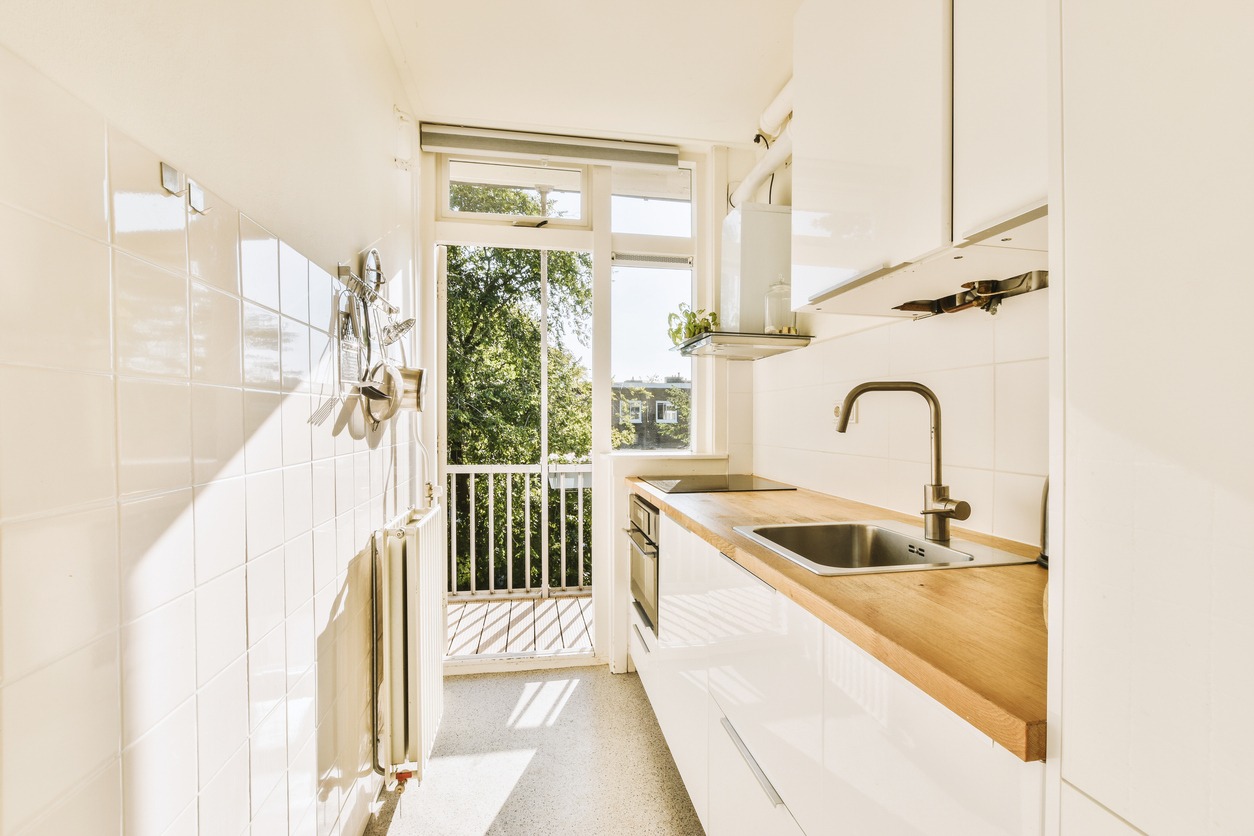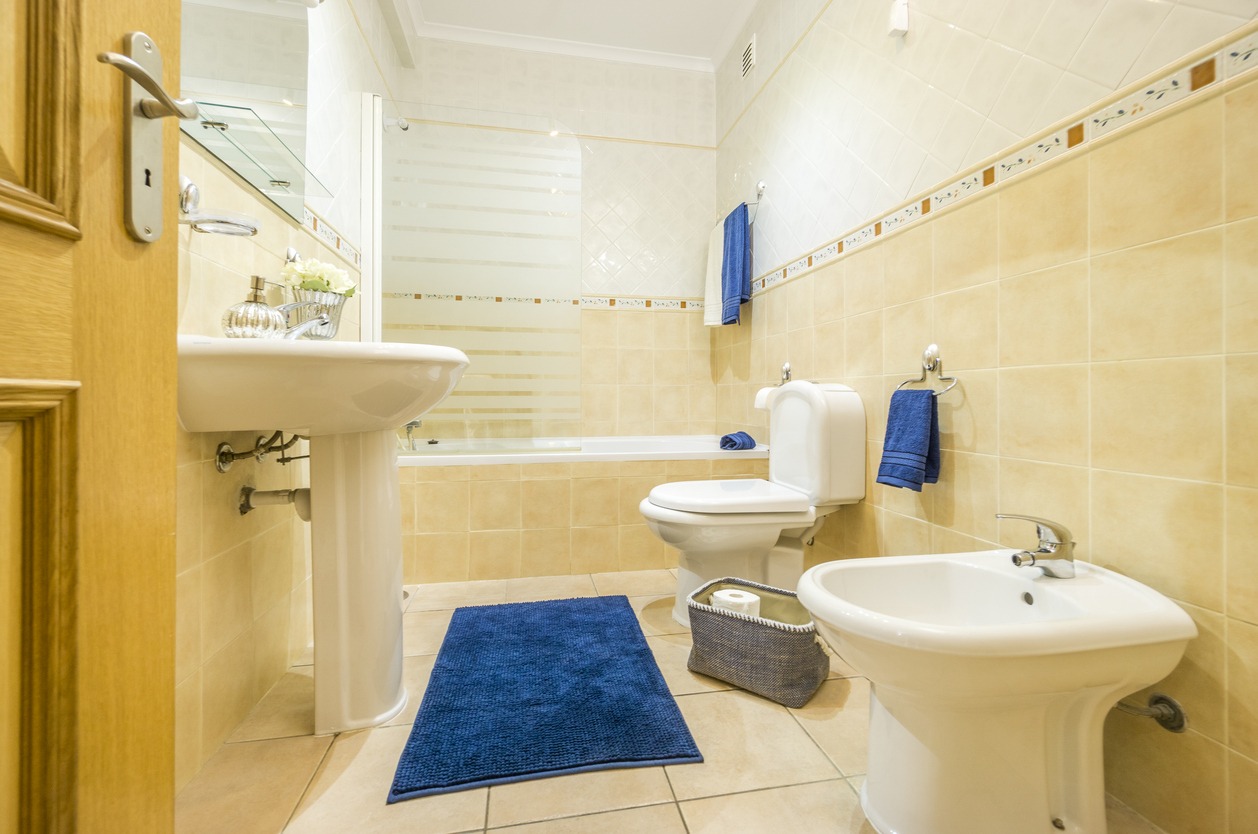If your room lacks enough space, you might need to pull out every trick to make it appear bigger. But the truth is, you might find the best trick in a simple solution: paint. It has the power to transform a space’s look and feel. Colors play a significant role in changing our perception of interior spaces.
One of the dominating trends in today’s home living is the “small living” trend. More homeowners choose “the simple life” by downsizing their spaces through these so-called “tiny homes.”
The driving factor behind this trend is usually financial constraints. But despite living in small spaces, homeowners don’t need to sacrifice the style that comes with downsizing. Small spaces enable them to be creative by maximizing every inch of available space. They use paint colors cleverly to make their “tiny homes” appear spacious, producing impressive results.
Myths About Using Colors in Interior Spaces
The conventional house wisdom dictates that lighter colors can make a small space appear bigger and brighter. But does that work in all small spaces?
The room is already small – there’s no other way around it unless you want to dismantle the walls to expand the space. Painting your room with a lighter or darker paint color won’t change the fact that it is small in reality. But colors can change your perception of interior spaces.
Here are some common myths about using colors in interior spaces (with a debunking explanation for each myth):
Myth 1: Always use light Colors to make a room appear larger
Debunked: Light colors can make a space feel more open and airy, but they aren’t the only option. Dark colors can also create an illusion of depth, making walls seem farther away than they are. The key is using the colors and the room’s overall design.
Myth 2: White is the best color for small spaces
Debunked: White can make a room feel sterile and uninviting if not balanced with other design elements. Warm or cool tones, depending on the room’s lighting and purpose, can be just as effective. Soft pastels, neutral tones, or bold colors can work if they complement the room’s furnishings and natural light.
Myth 3: Dark colors make a room feel smaller
Debunked: Dark colors can add depth and drama to a room, creating a cozy and intimate atmosphere. When used strategically, such as on one accent wall or in a well-lit room, dark colors can enhance the perception of space.
Myth 4: Avoid using multiple colors in a small room
Debunked: Using several colors can add visual interest and break up the space, making it feel larger. The key is maintaining a cohesive color scheme and balance between contrasting and complementary colors.
Myth 5: Ceilings must be white to make a room look larger
Debunked: Painting the ceiling a darker color than the walls can draw the eye upward and create a sense of height. Additionally, continuing the wall color onto the ceiling can blur boundaries and make the room feel more expansive.
Myth 6: Bright colors make a room appear larger
Debunked: Bright colors can overwhelm a small space and make it feel cluttered. Subdued, softer hues often work better in small rooms, though carefully chosen bright accents can add a sense of dimension and liveliness.
Myth 7: Contrasting colors should be avoided
Debunked: Contrasting colors can highlight architectural features and add depth to a room. For example, painting trim or moldings in a contrasting color can make walls recede, giving an illusion of more space.
Myth 8: A single color throughout is best for small spaces
Debunked: While a monochromatic color scheme can create a seamless look, varying shades of the same color or adding accent colors can create layers of interest and prevent the space from feeling flat and monotonous.
Myth 9: Floor color doesn’t impact room size perception
Debunked: The color of the floor can significantly impact how spacious a room feels. Lighter floors can make a room feel larger and more open, while darker floors can ground a space and create a cozy atmosphere, especially when paired with lighter walls.
Myth 10: Glossy paints make rooms look bigger
Debunked: Glossy paints can reflect light, which might help a room feel brighter but not necessarily larger. High gloss can also highlight imperfections on the walls. Matte or satin finishes often create a more even, expansive look.
Understand and apply these principles when painting a small room. That way, you can use color more effectively to influence the perception of space in any room.
Tips and tricks for painting a small room
Painting a small room can significantly impact its perceived size and ambiance. Here are some ideas and tips to consider:
Light and neutral colors
- Soft whites and off-whites: These colors can make a room look larger and more open.
- Pale grays: Light gray tones can add a modern touch while keeping the space feeling airy.
- Beiges and taupes: These warm neutrals create a cozy and inviting atmosphere without overwhelming the space.
Accent walls
- Subtle contrast: Paint one wall a slightly darker shade of the main color to create depth without shrinking the room.
- Bold accent: A vibrant color on one wall can add personality and focus without overwhelming the space.
Paint finishes
- Satin or semi-gloss: These finishes reflect more light and can make the room feel brighter.
- Metallic accents: Incorporate metallic paint or accents to add a touch of luxury and openness.
- Flat or matte finishes: You may also find this tip counterintuitive. A flat or matte paint usually absorbs light. However, it can also hide surface flaws and make the room’s edges and corners seem less obvious, giving it the illusion of an expansive space.
Monochromatic schemes
- Different shades of the same color: Using various shades of the same color can create a harmonious and spacious feel.
- Tone-on-tone: Combine slightly different tones within the same color family for a sophisticated look.
Vertical and horizontal stripes
- Vertical stripes: These can make the ceiling appear higher.
- Horizontal stripes: These can make the room look wider.
Light and cool colors
- Pastel blues and greens: These colors can be calming and make the room feel larger.
- Lavender and soft pinks: Light purples and pinks can add a gentle warmth while maintaining a spacious feel.
Ceiling colors
- Same color as walls: This can blur the boundaries and make the room feel larger.
- Lighter ceiling: A lighter shade on the ceiling can make it feel higher.
- Dark colors: As counterintuitive as it may sound, painting the ceiling in dark colors can open up a small space and create the illusion of a high ceiling.
Creative techniques
- Ombre walls: Gradual color changes from dark to light can add depth and interest.
- Two-tone walls: Painting the lower half of the wall a darker color and the upper half a lighter color can create a visually interesting space without overwhelming it.
Patterns and textures
- Subtle patterns: Small, delicate patterns can add interest without making the room feel cluttered.
- Textured paints: Slightly textured finishes can add dimension and a sophisticated touch.
Lighting considerations
- Enhance with lighting: Use paint colors that reflect natural and artificial light well to keep the room bright.
- Light reflective colors: Choose colors with higher light reflectance values (LRV) to maximize light in the room.
Coordinating with furniture
- Light furniture: Pair light walls with light-colored furniture to maintain an open feel.
- Minimal contrast: Keep the contrast between walls and furniture low to avoid visual clutter.
Non-painting tips for small spaces
- Clear clutter to open up space and create a larger feel.
- Hang a large mirror. It offers a practical way to enhance light and space in a small room.
- Choose furniture with visible legs to create a floating effect. It enhances light, airflow, and spaciousness in your small room.
- Let natural light in. Remove heavy curtains, drapes, or blinds that can otherwise prevent natural light from entering the room.
- But if you still love curtains, consider sheer ones for natural light. Use ceiling-to-floor curtains to create a sense of height.
By thoughtfully choosing paint colors and other techniques, you can make a small room feel larger, brighter, and more inviting.
Conclusion
You can say how impactful a fresh coat of paint is in breathing new life into a room and changing your perception of interior spaces. If your rooms lack ample space, we hope these tips and tricks inspire you to research the best colors and take up the brush (or roller). You’ll be amazed how paint works wonders in a small space.
If you need professional assistance, Custom Painting, Inc. can help you explore various available colors and designs. We offer a free color consultation service that can help you with your design choices if you’re unsure. Call us at 925-294-8062 or message us on our contact form or quote request to schedule a free consultation and estimate.



